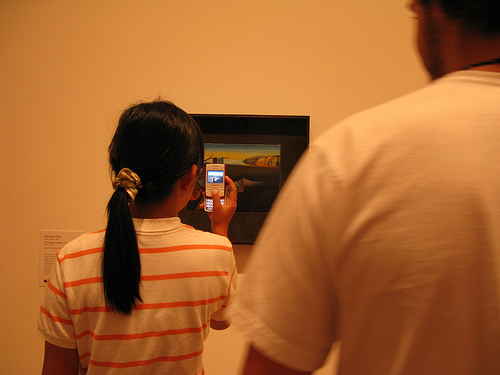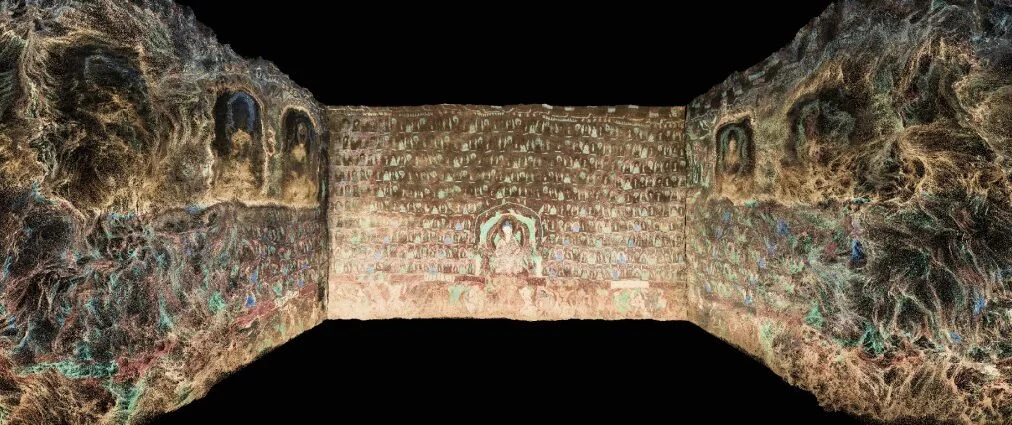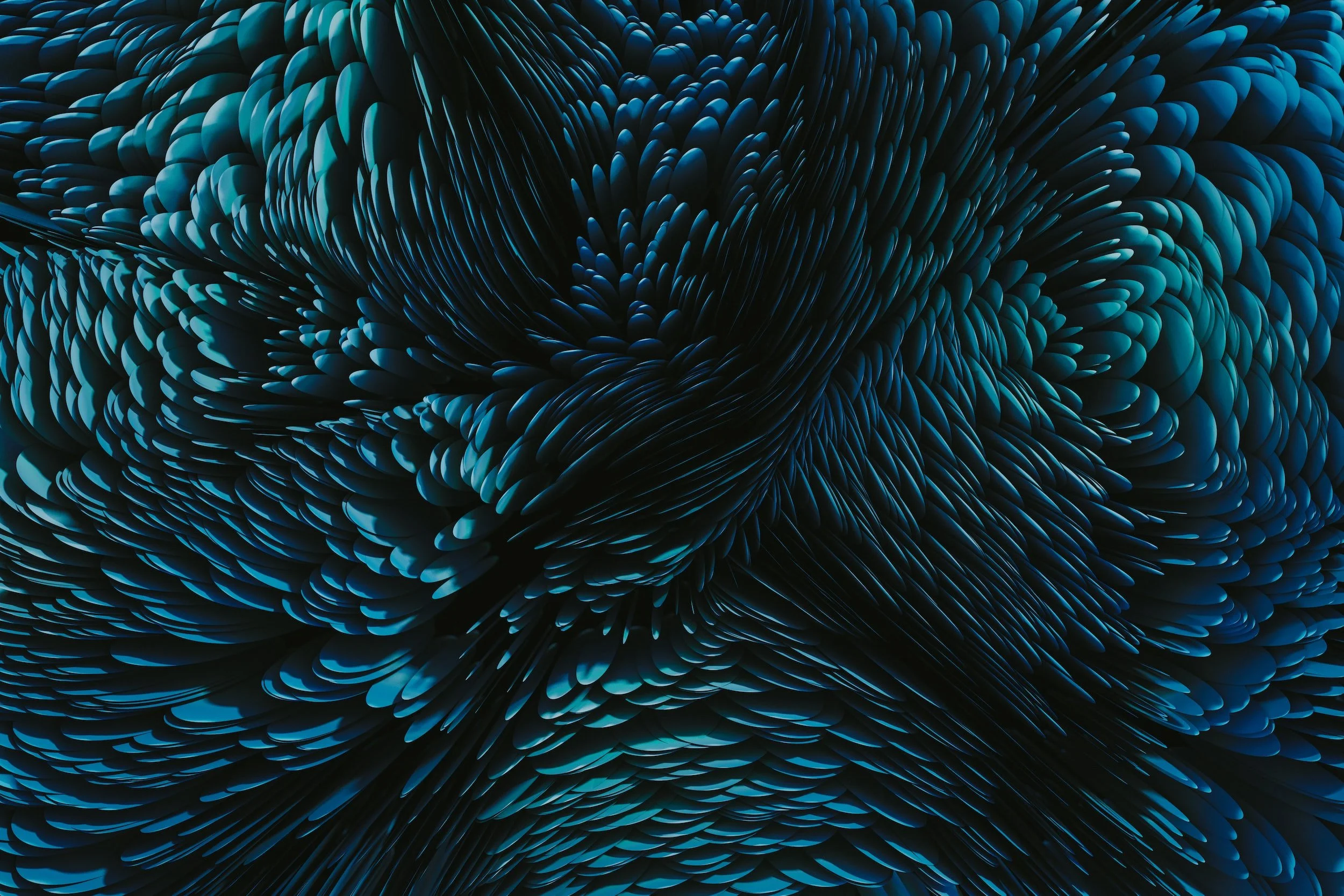Cultural heritage is a testament to millennia of civilization, but it is threatened by natural erosion, tourism, and time. Most traditional methods of conservation, though foundational, have difficulty responding to the scale and complexity of these emerging challenges. Digital technologies, such as artificial intelligence (AI), 3D scanning, virtual reality (VR), and blockchain, can offer new solutions. This article examines how digitization preserves and revitalizes cultural property using the Mogao Caves as a case study.
Building a new Museum Ritual: Museum Digital Experiences
This article examines 8 suggestions for museums to implement well-rounded digital projects for their audiences that are specific to the online context. These suggestions are drawn on the Rachel Broughton’s article Bridging the Gap Between Digital Native Modes of Learning and the Traditional Museum Ritual—find it here.
Translating Events, Exhibitions, and Experiences into Digital Products
With the first two quarters of 2020 seeing visual arts spaces losing between 31-73% of revenue and 15-74% of full-time/contracted employees, various audiences, from artists to consumers have been turning to digital platforms to engage in cultural or entertainment offerings (Art Dealers Association of America). The range of these technological platforms and applications have been vast, with many interesting case studies to focus on. In this article, we will be focusing on how visual artists have used social media, video games, and other digital applications to capture audiences that they otherwise would not be able to access without technological means.
Open Data and the Arts: What's Next?
How can galleries, libraries, archives and museums create long-term value with open data? Can cultural institutions become leaders for social innovation by opening data? Open data advocates argue that yes, they can, but only if they are able to translate that data into useable knowledge. AMT Lab Contributor Sarah Weber investigates.
Bravo! Hats Off to Innovative Technology!
Congratulations to the 2010 winners of the 21st annual MUSE Awards! We all know that without a collection or traveling exhibits, a museum would not exist. Period. But how long can that museum, despite an amazing collection, exist without connecting to the public in new and exciting ways? It is impossible. Especially in this ever-changing digital age, museums have to get creative! (Slightly ironic, since they are housing creativity to begin with...)
Which is why, every year, the American Association of Museums’ Media & Technology Committee celebrates innovation and creativity of digital media in the museum sector with the prestigious MUSE Awards.
Over 200 entries from museums around the world were reviewed by an international jury of museum professionals and media experts, and the results were presented at the AAM annual conference in Los Angeles.
For full descriptions of all the winners, click the category! But in the meantime, check out some highlights and favorites.
Imagining Lincoln and Juarez; Chicago History Museum and Ed Herrman
The Chicago History Museum has developed pre-programmed iPods and accompanying worksheets, to immerse students in the exhibition with sounds that created the mood and engage them with the collection.
O Say Can You Sing? National Anthem Singing Contest; National Museum of American History, Smithsonian Institution and Night Kitchen
The National Museum of American History held a singing contest to engage the American people with the story of the flag and national anthem. Over 800 eligible entries were submitted via YouTube, and thousands of people rated and commented on their favorites. The winner was invited to perform at both the museum and the Baltimore Orioles game on June 14, 2009 (Flag Day)!
t.a.g. Open Museum
The Association Game (t.a.g.) is a non-verbal educational game for grownups where an image is chosen at random from the Open Museum collection, participants respond with an image that is somehow associated with or reminiscent of the original image, everyone votes on what they think is the best successor, and then the winning image becomes a starting point for the next round. There are three rounds a week with an average of 15 images submitted for each round. **One of my personal favorites because anyone can sign up for free and play the game now!**
UMMA's DialogTable; University of Michigan Museum of Art and Kinecity & Night Kitchen Interactive
The UMMA DialogTable is a dynamic new interactive storytelling and social learning tool located in the Vertical Gallery of the University of Michigan Museum of Art's new Maxine and Stuart Frankel and the Frankel Family Wing. The DialogTable engages audiences with art and ideas, prompting new conversations and creative connections. Since the Table is located in the extended-hours zone of the Museum, visitors can engage with the collection even after the galleries are closed!
Interpretive Interactive Installations
Worldwide Animal Viewers; Museum Victoria and Megafun Pty Ltd
Melbourne Museum in Victoria, Australia recently opened a new biodiversity exhibition, “Wild: amazing animals in a changing world,” which has 770 mammal and bird mounts from all over the globe. Designed for a broad audience, the interactive interpretive device needed to be developed for all types of guests to use. Museum Victoria worked with Megafun Pty Ltd to create the PANORAMIC NAVIGATORS, in this case referred to as "Worldwide Animal Viewers," a surprisingly easy and fun system which accesses additional information about every specimen in the exhibit.
Beyond All Boundaries; National World War II Museum and The Hettema Group
Beyond All Boundaries, the signature 4-D cinematic experience at The National World War II Museum was designed to attract both new and existing audiences to the Museum, and to bring World War II to life in an entirely new way. The words and stories of actual WWII participants are brought to life by many of today's leading actors, and viewers experience the war in first person through state-of-the-art special effects where they feel the vibrations of B-17 bombers and see snow falling inside the theater during the Battle of the Bulge.
We Choose the Moon; John F. Kennedy Presidential Library & Museum and Domani Studios & The Martin Agency
We Choose the Moon is an amazingly integrated website which recreates Apollo 11's lunar mission, minute by minute, with an interactive experience that let visitors experience the mission as it happened, using archival audio, video, photos and "real-time" transmissions on the site and via Twitter.
Audio on demand program; National Museum of Australia and Icelab Pty Ltd
The National Museum of Australia's Audio on Demand program is an evolving collection of recordings of lectures, forums and symposiums held at the Museum's building in Canberra. There is a wide range of topics relating to social history, and especially the Indigenous peoples of Australia since the museum has such a strong collection.
Public Relations and Development
Raising Spirits; Asian Art Museum of San Francisco and The Arts Lounge
Raising Spirits is a comprehensive public relations package designed to promote a traveling, multimedia art history presentation showcasing the Asian Art Museum of San Francisco's permanent collection. The package takes the world-renowned collection "on the road" via a plasma screen into private dining rooms of our patrons, while host Kirsten Shilakes tells tightly woven stories about art, food and wine, taking guests on a multi-sensory aesthetic and culinary journey.
Teaching and Outreach Videos; Art Institute of Chicago and Angle Park, Inc.
Collectively directed towards educators, parents, and caregivers, the Art Institute of Chicago's teaching and outreach videos demonstrate meaningful and effective strategies to engage young audiences on their visit to the art museum. Dynamically accessible in the museum and online with both English and Spanish subtitles, this group of videos created by the Art Institute of Chicago and film company Angle Park, Inc., helps teacher-student and parent-child audiences make the most of their museum visit.
Buck Ramsey's Grass: Anthem; Nevada Museum of Art and FLF Films Inc & UeBersee Inc.
The Nevada Museum of Art has created a moving piece which effectively transports the viewer into a land where the enduring tradition of cowboy poetry is a rich and vital form of cultural expression in the American West. This film was created and produced for the 2009 exhibition Between Grass & Sky: Rhythms of a Cowboy Poem, and is inspired by the Texas poet Buck Ramsey widely-celebrated poem Grass.
Honeysett & Din Student Award (new this year!)
Concept Design: Touch the Unreachable—Looking for Finnish identity; Virva Emilia Auvinen, Aalto University School of Art & Design-MediaLab Helsinki, Finland
"Touch the Unreachable" is a concept design on how to use interactive storytelling techniques, video, 3D animation and graphic visualization for art education purposes. The "Touch the Unreachable" concept is an application designed for a museum environment and aims to promote knowledge of Finnish cultural heritage.
****
What are your favorites? How can these remarkable projects help you and your organization integrate more technology in innovative ways? We would love to hear what YOU are doing!
Technology in the Museum: Turning Visitors On or Off to Art?
 Photo caption on Flickr: "There was a queue waiting to photograph this little Dali painting." Photo by moirabot.
Photo caption on Flickr: "There was a queue waiting to photograph this little Dali painting." Photo by moirabot.
On the Technology in the Arts LinkedIn group a member, referencing this blog post, asked: "Will Tech Engage or Distract a Museum Visit?"
This simple question led me down a rabbit-hole of tangential questions and topics (internal vs. external technology, technology for information vs. dialogue, and so forth) that made it impossible for me to compose a post that contained any rhyme or reason. And so I return to that most basic question here.
Technology: does it engage or distract the visitor? A friend of mine remarked, "I hate cameras for daily documentation. I think cameras detract from the authenticity of an experience, because you filter that experience through a lens." Certainly, I have photographs of experiences that I was a step removed from because I was so concerned with DOCUMENTING events that I didn't participate as fully as I could have. The flip side is that I have proof that indeed, I was there, it was awesome, and now I own it--forever.
This "ownership" issue arises when we debate photography policies in a museum. Often the photographers are people who take pride in having the experience, and want to have something by which to remember, share, and "keep" it. But as my friend said, in many cases they are likely removed from the immediacy of the art by the act of taking photos. Of course, the experience to them could be less about the art than it is about the "been-there-done-that" element of going to the museum, but is it fair to judge that person as being irreverent, or "missing the point?" At least they were there, and cared enough to take a picture, right?
Alternately, there is technology that is provided by some museums for the visitor to utilize. This technology is arguably nothing more than updated versions of the visitor's guidebook, later the VHS playing in the corner of a gallery, showing a documentary (available for purchase in the gift shop!) about an artist, or the walking audio-handsets. In some places a visitor may use his iPhone to scan a barcode and learn more information about a given piece. In others there are iPods set up that visitors can use to view a short movie about a work. And, of course, the curious smartphone user might use his own technology to visit wikipedia while standing in front of a piece. I argue that, in so doing, that visitor distills the experience of art into something that requires explanation, rather than a communication to be received by the viewer without others' interpretation. Of course, I also argue that that sense of curiosity shows a degree of interest on some level, and should not be condemned.
Technology removes the necessity for personal, visceral interpretation of a piece; as quickly as a viewer can form an impression he can access a wealth of information that competes with (or "legitimizes") his instinctive understanding. While I am a testament to the fact that background information can completely sway the experience of viewing a certain piece, and I have grown to love certain pieces because of what I have later learned about the artist, historical context, and so forth, I don't know that I think the museum experience should necessarily be a lesson ABOUT the art.
Shouldn't the learning be a supplement to the going? I think about the symphony, or ballet, or opera, or theater--the audience may have some information in their program to lend insight into plot, composer, musicians, and so forth, but I would be surprised if I were surrounded by audience members simultaneously listening to a recording that said, "Now, this movement here represents..."
By techologizing the experience of visual art, are we pandering to a society that wants experience for the sake of having done it, wants to know what to think without forming a decision, that needs to have as much information as possible in as little time as possible? Are we leading people to experience art the same way they experience a trip: interpreted by GPS rather than orienting themselves in their world, figuring it out from a map, appreciating the journey?
Or are we addressing the fact that museums are expected by many to be intimidating places, off-putting and cold, sterile and quiet, where disliking something makes the viewer feel as if he just doesn't "get it?" Is technology the antidote, a way to inject the familiarly contemporary into an institution that is perceived as unchanging and never-aging? Are we introducing a new way to experience art, and it fair to value one experience above another?
Addendum: The Brooklyn Museum's blog post about successful and unsuccessful uses of technology in the museum.









